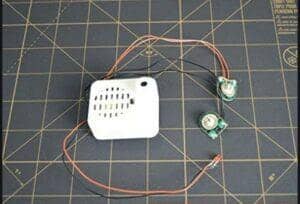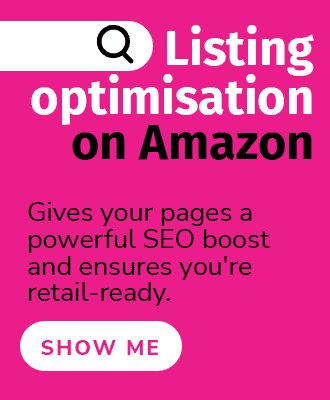This week, we welcome guest blogger George Tewson. George is the founder of MerchSprout, a UK-based company that helps businesses source, audit, QC, and ship items efficiently and cost-effectively from China.
In this post, we are going to discuss tips to ensure you get the best quality products from China. China can be the wild west when it comes to quality, and through our years of quality assurance in China, we have had our fair share of gunfights, too. We have put together our top 5 tips and insights to ensure you come out more like John Wayne than Prospector Pete.
China can be all things from absolutely fantastic, to depressingly tiresome, and everything in between. I am not selling you any fantasy when stating it’s all within your control, it truly is, but initially, you need to ask yourself, why am I looking at sourcing in China?
Make no mistake, China can be cheap, and when I ask this question to the majority of clients, cost is the main driver. Low cost, low shipping rates, and a relatively robust supply chain. But the next question you should be asking yourself is, what is the cost of poor quality to me?
COPQ (Cost of Poor Quality) far outweighs any gains you may make when sourcing cheap stock in China, especially if you are an e-commerce seller on Amazon. COPQ is the cost to you, when the quality of the product does not meet you, your customers, retailers, or stockists' expectations.
The hidden costs, the returns, the damage to your brand, your reputation, and ultimately to you. It’s almost impossible to gauge the cost of the damage when your product falls short of expectations. The only way to avoid it is to ensure you have a quality product.
It can become a costly adventure. So instead of chasing purely cost when sourcing, a better route to follow is chasing quality and working on the cost to get the best product for your cash.
Tip #1: When initially sourcing from China or Asia, source for quality, not the lowest cost
COPQ should never be understated, seldom do good-quality products go hand in hand with low prices.
Don’t get me wrong; It’s not impossible to get good value for money in China and Asia; you absolutely can. But when we discuss quality products and building quality products, it’s important to understand the difference between a low price and a good product.
If this is your first venture into China, then you need to be chasing quality first then work on cost, don’t work with a cheap cost, and then try to build quality.
We would all love to get the lowest price possible. Indeed that is the aim of the game, but we need to get the best value for money, to gain the total lowest cost (remember COPQ)
There are fundamentally two ways that you save money:
- The price that you pay directly when purchasing stock.
- How efficiently the supplier produces stock to your contract (including your standards and quality expectations).
There are some different approaches on how to get the best bang for your buck. When working with any Asian supplier. Companies tend to head straight to the cheapest option, when, in fact, that is not always the best tactic. By choosing the correct supplier from the beginning, you can remove a lot of the issues and subsequent costs that you may have down the road.
Relationship building
When first searching for manufacturing partners, many companies come to Asia with very heavy-handed negotiating techniques. Instead, you need to develop and build good relationships. This pays dividends; good relationships can not be understated in business, and it’s the same case when working with Chinese suppliers. A good purchasing buyer builds these relationships from the first initial contact with suppliers. Selecting the correct partner in Asia starts with robust requirements.
The process
Trying to select the best supplier is a little like selecting the best new TV to watch your favourite shows on. It’s hard to choose; with so many brands and combinations of specifications. You want to ensure that you get the best value for your money. This is important for obvious reasons. Buyers have the same issues. However, there are some steps that purchasers can use to ensure that they get the best value for money possible.
6-step process to selecting a supplier
- Recognise the need- You require the product, but do you fully understand all the needs of the product? If you are searching for products when you don’t fully understand what the function, fit, and market is, then chances are you may be searching for the wrong thing in the wrong place. Research the product thoroughly first.
- Understand the needs of the end customer- What are the needs of the end customer, meaning the end-user; the person who will be using the product. What is needed in terms of cost and when does it need to be delivered?
- Determine the strategy for buying the item- Will you source this item from just one supplier? Will you be looking to purchase this from a manufacturer, trading company, or a wholesaler/ distributor? All have benefits and pitfalls. If you have a plan that considers the best fit, then you will be in a better place to get the best value for money.
- Identify potential suppliers for this product- This is where you can start to look for suppliers that may make similar items of your proposed product based upon the needs that you have understood in the previous steps.
- Send out your RFQ- We have dedicated an entire post to RFQ compositions and construction. The better the RFQ, the more robust and accurate the quote will be.
- Award the contract- There are sub-steps between the receiving of quotes from your potential suppliers, ensuring they are the correct supplier for the product and you, and awarding the contract. These can include ensuring that the suppliers understand payment, delivery terms, quality requirements, and communication expectations.
Tip #2: Plan, plan, and plan again
Even on the second tip into this post, you may be starting to think about questions you hadn’t considered. Things like:
- How do I get stock from China to the UK?
- How do I ensure I only get quality products from suppliers?
- How can I be sure that I am not being ripped off and scammed?
Planning is the secret to doing anything in manufacturing, be it here in the west or abroad in Asia. When you have a solid plan, your entire buying, manufacturing, and shipping operations will go far smoother.
Far before you have selected a supplier, you need to have a process mapped out, with some initial timing against the individual points. When you have a process mapped out, you will be able to see the items that you either understand or the items you don’t.
In the event of you not fully understanding the process, you will need to do one of two things:
- Sit down; research and learn the process.
- Pay someone who already knows the process.
If you choose to head on regardless, it’s probably safe to say that you either will fail in the process step, causing delays, or inciting costs and quality issues that could have otherwise been avoided.
Either way, having an initial plan of the process and steps, allows you to start thinking about steps that you may have not even realised you need.
The next thing to ensure is that you have planned your product. This is a massive task in itself and starts from the very beginning of product market research. You can read more about how to build a powerful product through market research and selecting the best market research tactic for your next product.
Once you have a plan of market research, product, and a brief idea of design, you have an initial plan for your product.
Your product will need to be documented, with all the finite details that a manufacturer would need to know to be able to replicate and make your product. This can be documented in a document named the RFQ. It should hold enough information in the document for a supplier to be able to provide you with a detailed quotation, but don’t put so much information into it that you give away all your hard work for free. It’s a fine balance.
You need to plan every single process in your system to get the best product at the best price and understand all the processes within the steps. But to actually get to the suppliers first you need to ensure your RFQ is as robust as possible:
Tip #3: Have a robust RFQ
An RFQ stands for request for quotation.
A request for quotation is the most overlooked piece of documentation in purchasing interactions. It’s the instructions to a vendor (supplier) to supply you with a price of something that you need, that they have, or, the ability to produce.
You are providing an opportunity for a group (you), to swap money in exchange for goods or services (suppliers).
Purchasing interactions happen, literally, millions of times a second on a global scale, the art of buying in person is fading. With each interaction where someone is buying something without seeing it, we are losing a little skill that a previous version of us had.
When we go into a shop or store, we pick up and feel products; we inspect them to ensure they are the correct size, fit, and function.
Without knowing it, you are analysing the potential purchase in specific details that you may not even realise. You’re learning what’s in the market by comparing items, side by side, hand in hand. For millennia, as humans, we have been asking if the product is good enough and will it perform its function to my expectation.
These days, we look at photos on a screen, comparing what we deem worthy. How often do you look on your I-phone, tablet, or computer screen, tongue one side of the lips, squinting; frantically looking from screen to room; trying to estimate if that Amazon faux Christmas tree will fit into the corner of your apartment, all based upon the rough dimensions given on-screen?
Global sourcing is no different
The RFQ document allows you to put all the information in one place, which you need: Material, height size, colour, dimensions, and any questions that need answering such as how a supplier would get it to you.
Compiling this information means that you can copy it numerous times, this, therefore, splits you, as the perfect buyer into many copies. Meaning that you can send it to many more manufacturers. You don’t need to be in the market, product in hand, if your RFQ is detailed enough, you can save time with suppliers.
You invite suppliers to provide you with quotations, you remove the need to ask every single supplier individually the same questions over and over again. Suppliers instead will tell you if they want the work or not, if they can produce parts to your specifications, drawings, colours and you get the price they can do it for.
RFQ response form
If you tailor a response form to your RFQ document, then you can get the exact answers that you want in the format that you want. This is the biggest time-saving hack that I found when sending RFQ’s out to global suppliers; you make the supplier answer your questions in a format that suits you.
If you have sourced or bought from manufacturers before, especially overseas, you will know that the initial correspondence can be somewhat convoluted, you get more questions back than you initially asked. An RFQ can also contain drawings to bridge language, cultural and physical borders. They’re easily referenced, and help a supplier create accurate quotes.
This can also make comparison shopping easier and remove emotion from the supplier selection process. This leads us on to our 4th tip.
Tip #4: Select the correct supplier
It doesn’t take a genius in purchasing anything to understand that the correct supplier selection from the start will allow you to go on ensuring that your product will be of higher quality than selecting the wrong supplier. But it's really tough weeding out the bad suppliers from the good suppliers, when just having a quote back on a screen. So how can you ensure that your selected supplier is the best supplier for you?
How to ensure you select the correct supplier
There is no one silver bullet for selecting the correct supplier; it really is about ensuring that you conduct your due diligence at every stage of the process when selecting your manufacturing partner.
But, there are a few foundations that you can work too, ensuring that you kick off the relationship in a positive way and find the best supplier for you and your product.
The first is ensuring that you have robust requirements right from the start.
It weeds out the good, the bad, and the downright ugly.
There are several ways to approach the initial contact with suppliers; we always advise constructing an RFQ with all the relevant information in it. Be sure to check out our blog post on constructing an RFQ.
The RFQ is the first contact that you will likely have with a supplier. You can weed out a lot of bad suppliers just by having clear and concise instructions, set out in a way that is easy to understand, is not open to ambiguity, and has drawings that are easy to follow.
Don’t just choose suppliers on price alone
You really do get what you pay for in China and Asia. If a price seems too good to be true, it usually is. Don’t get too hung up on chasing the lowest cost.
Instead, aim for quality first and then negotiate on price. Remember, you really want to build relationships with suppliers, you want them to look after you as much as they can, however, if you have been beating them with a big stick to get the absolute cheapest possible price, it’s probably safe to say they won’t be looking after all your interests.
Let’s say we have sent our RFQ to several suppliers. And a few suppliers come back with a few questions; a lot can be told about the suppliers' understanding of the product based upon the questions returned, does it seem like they have grasped the product?
Are they asking questions showing they don’t have the level of understanding about the product that you would expect of this sort of supplier?
This communication avenue is not just a one-way street, you can ask questions here too, such as; what manufacturing procedures do you use, what is it you usually produce, is there any stock, or samples you can send to show what level and quality of the product you usually make, what are the quality tests and procedures that you employ on current stock production?
Being on the ground mitigates some of the biggest risks and mistakes
It's no lie, some suppliers, even the gold star suppliers on Alibaba, will shaft you. There is always the potential; you on the other side of the world, faceless, just words on a screen, for you to be strung along and scammed. Being on the ground in the market, meeting these people face to face- in the facility- reduces this risk substantially.
But, and it's a big but. If 2020 has shown us anything, it’s not always a possibility to get to the market, into the factory. Having a trustworthy contact on the ground is a must. But let’s not get too ahead of ourselves here; have a read here why you need a sourcing agent in China.
Pick more than one supplier
One of the biggest mistakes we see is importers working their way into a corner, and it’s of their own making: When sourcing anywhere in the world it's a far better idea to keep your options open with regards to suppliers. Having one supplier is great, especially if you are generating robust relations and products with them.
But, there becomes a point that if a single supplier has a monopoly on you and your product; and they know it, then they will start to squeeze you for more cash, or they may start to let quality slide. If there is only one supply of product from one source, then you will have nowhere to turn when quality issues arise.
The way to mitigate some of this risk is by spreading your product line across suppliers and let them know you are doing it.
I appreciate it’s not for everyone and it's very much dependent upon your own situation. However, not only does it give you the benefit of driving down the cost in negotiations, but also it gives you the upper hand in ensuring that suppliers comply with your quality standards.
Tip #5: Know your BOM
A BOM stands for Bill Of Materials, and it’s really important that you know this information when working with any suppliers in Asia.
A BOM contains all the information about your product, the sub-assemblies, the price of the sub-assemblies, the suppliers of the sub-assemblies, and ultimately it’s a parts list of your component.
Because quality is so reliant upon having robust processes in the chain (including a sub-supplier of components), you need to know if there is the potential for any issues in that chain.
Let me give you an example, say we were producing a cuddly toy from supplier A. Supplier A bought various components from a range of suppliers, let’s call them, supplier B, C, and D.
In a perfect world, we would have a list of sub-components for our cuddly toy, Supplier B (now known as a second-tier supplier) makes the computer chips for the voice box in our cuddly toy. To visualise this:

A cuddly toy from supplier A.

Voicebox from an inside cuddly toy from supplier B.
Now that we know that Supplier B is the supplier of the voice boxes we know where they are from, the price of the sub-components, and (in an ideal world) because we have conducted an audit on supplier B their factory is up to the quality standard for our components (meaning that we have greater control of quality in our products). We know they conform to our social thresholds for the ethos of our company (no child labor, poor working conditions, etc.).
Component complexity
The BOM may run into many hundreds if not thousands of line items. Remember, by having a really detailed view of your product BOM from your supplier; you know what the components are, where they are from, and the real cost.
The supplier no longer can have you over the barrel with regards to price and quality. They no longer have the control, and therefore monopoly on you and your product.
It is essential that when you are searching for a supplier in Asia, that you think of how much you really want to be at the mercy of your chosen supplier.
Conclusion and additional help
It’s mainly about having a plan, acting upon that plan, and controlling as much as possible. Remember that the cost of poor quality is something you absolutely can control, and you want to chase for quality not for cost when beginning to search for stock in Asia.
These are by no means the only tips that you should follow; there will be things that go wrong; there always is when launching a product. But with a considerable amount of planning it's entirely possible to gain excellent products from China that are fantastic value for money. For more information on how our services can help, contact MerchSprout to discuss your supply chain needs




